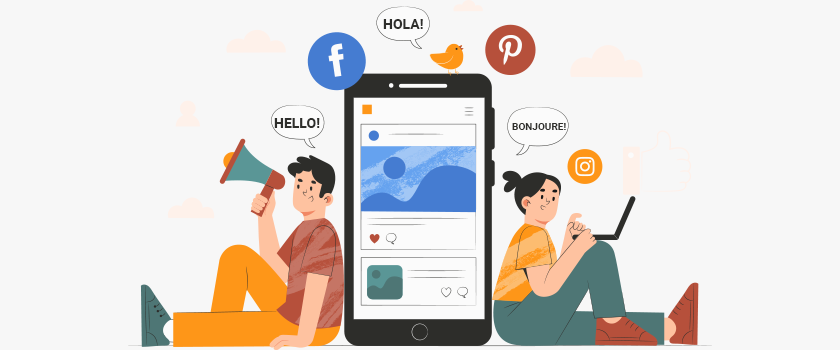Social media is the buzz word we hear in everyday life. It is such an important tool that has limited the distances and made it easier to expand your business globally. By appropriate use of social media tools like Facebook, Instagram, Twitter, and LinkedIn, you can shape the behavior of potential customers. It helps in direct communication with customers and keeps them engaged. Through a strategic approach and appropriate use of different social networking sites, you can make them feel valued.
Mostly, the English language is used in Social media. But there are thousands of languages spoken in the world, and people take interest in your product if it is marketed in their native language. If you translate your social media content into different languages, you can target your potential market easily.
Translation of social media content is a complex task, and you will come across many challenges while doing it. Let us have a look at the primary challenges of social media translation.
Length of the Content
In November 2017, twitter changed the character limit of approximately all the languages from 140 to 280 except for Korean, Chinese, and Japanese. It has given a free edge to marketers to express their creativity in marketing. Space of the content is the main challenge that one faces while translating social media content. When we translate content from English, the content expands leading to more use of space for words and characters. It often becomes difficult to insert the required content in limited space when using Twitter. Length can also be a problem when we want to communicate through Instagram and Facebook. As per HubSpot’s article, shorter posts help to keep customers engaged. It is suggested to use shorter length content so that if your content expands with the translation; you don’t face problems in inserting the content in the given space.
Hashtags
Hashtags are an important feature used on social media. These are widely used in digital communication. Initially used only on Twitter, these are now used on other social platforms as well. Hashtags consist of one or a combination of words and denoted by the sign ‘#’. Translation of hashtags is very difficult and one gets confused about whether to translate a hashtag or not. The problem in hashtag translation occurs when the composition of the sentence is associated with the word that has the main role in the sentence. Usually, hashtags are not used in the sentence instead they are used at the end of the words. Hashtags cannot be translated by using the equivalent words of the target language. They depict the consumer’s preferences and emotions, so the best way is to find the relevant hashtags (with equal popularity in the target market) about the topic under consideration and use them instead of the literally translated words.
Terminologies and Jargons
Social media also uses different terminologies and jargons according to its specific platforms like Facebook, Twitter, Instagram, and LinkedIn. As many of the social media platforms were originally created in the English language, they depict a semantic meaning of the same language. Therefore, translating the terms and jargon of social media is difficult, as it might make no sense in other languages. The structural and terminological changes make the translation difficult for social media, and hiring professional LSPs is the best solution possible.
Wrapping Up
Social media is a sensitive platform that can make or break your global image in seconds. You can take your business to the next level by overcoming social media translation challenges. To deal with these challenges of social media translation, it is recommended to take the assistance of Professional Translation Services.
Want to know how CCJK is providing reliable and fast social media translation services? Get in touch now!



